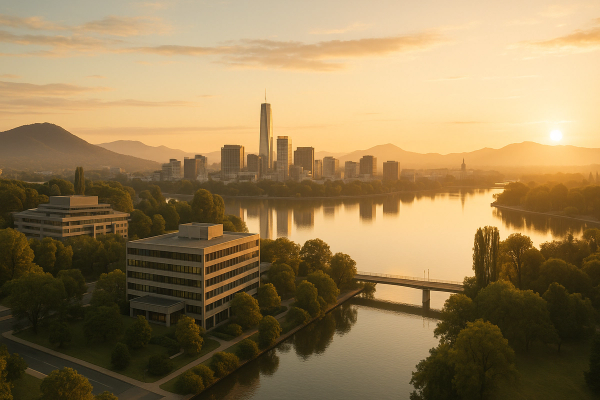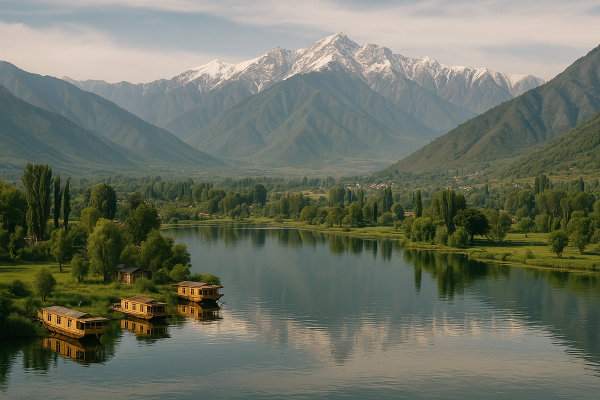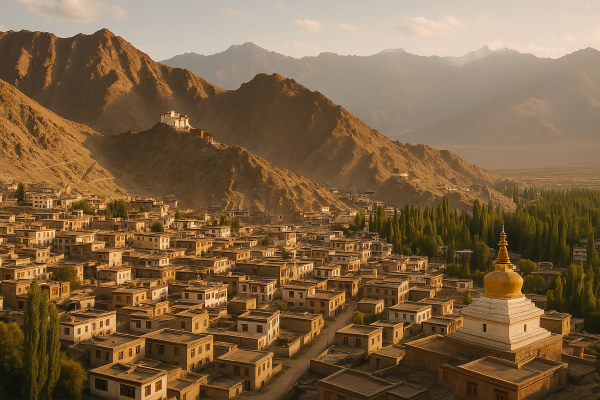
Paddle Through Starlight: Your Beginner's Guide to Kayaking Bioluminescent Bays in Puerto Rico#
Imagine dipping your paddle into inky black water, only to see it erupt in a cascade of shimmering, ethereal blue-green light. Picture tiny galaxies swirling around your kayak, each stroke painting a fleeting masterpiece in the darkness. This isn't science fiction; it's the magic of kayaking a bioluminescent bay in Puerto Rico, an experience so surreal it feels plucked from a dream. If you're an adventure traveler, especially a beginner looking for a truly unforgettable Caribbean escapade, this guide is your starting point.¶
Puerto Rico, the vibrant 'Island of Enchantment', is blessed with not one, but three major bioluminescent bays – rare ecosystems where microscopic organisms called dinoflagellates (Pyrodinium bahamense) emit light when disturbed. Kayaking is, without doubt, the most intimate and eco-friendly way to witness this natural phenomenon. This kayaking bioluminescent bay puerto rico guide will walk you through everything you need to know, from choosing the best location to essential safety tips, ensuring your adventure is as magical as the glow itself.¶
Puerto Rico's Bioluminescent Wonders: A Quick Overview#
Before we dive into the kayaking specifics, let's set the scene. Puerto Rico is a U.S. territory in the Caribbean, known for its stunning beaches, lush rainforests (like El Yunque), rich history (Old San Juan), vibrant music, and delicious food. Its unique geography creates the perfect conditions for these 'bio bays': shallow water, mangrove forests providing nutrients, and narrow openings to the sea that trap the dinoflagellates.¶
There are three main bioluminescent bays accessible to tourists:¶
- Mosquito Bay (Vieques): Officially declared the brightest bioluminescent bay in the world by the Guinness Book of World Records. Requires a trip to the separate island of Vieques.
- Laguna Grande (Fajardo): Located on the northeast coast of the main island, easily accessible from San Juan. Kayaking through a mangrove channel leads to the lagoon.
- La Parguera (Lajas): Situated on the southwest coast. This is the only bay where motorboats are common and swimming was historically allowed (though regulations change, and eco-consciousness is growing). Kayaking is also an option here, but it's often considered less pristine due to boat traffic.
This guide focuses primarily on Mosquito Bay and Laguna Grande, as they offer the most popular and often most brilliant kayaking experiences for beginners.¶
When is the Best Time for Bioluminescent Kayaking?#
Timing is absolutely crucial for maximizing the bioluminescent glow. It's not just about the time of year, but also the time of the month.¶
Moon Phase: The Single Most Important Factor#
The darker the night, the brighter the bioluminescence appears. Therefore, the best time to go is during the New Moon phase, or the days leading up to and immediately following it.¶
Pro Tip: Avoid planning your bio bay tour during a Full Moon or the days surrounding it. The moonlight significantly washes out the glow, potentially leading to a disappointing experience. Check a moon phase calendar online before booking your trip or tour!
Time of Year & Weather#
Puerto Rico enjoys warm weather year-round. While the bioluminescence is present throughout the year, certain factors can influence its intensity:¶
- Dry Season (Winter/Spring - December to April): Generally clearer skies and less rain mean less runoff clouding the water, potentially leading to better visibility. This is also peak tourist season, so book tours well in advance.
- Wet Season (Summer/Fall - May to November): More frequent rain. Heavy rainfall can temporarily diminish the glow by flushing the bay with fresh water or stirring up sediment. However, tours still run, and incredible experiences are common. This season includes hurricane season (June 1st - November 30th), so travel insurance is highly recommended.
My personal sweet spot? Shoulder season (late April/May or November/early December) timed with a New Moon. You might get better prices and fewer crowds than peak season, with potentially good weather.¶
Getting There: Reaching Puerto Rico's Bio Bays#
First, you need to get to Puerto Rico. Luis Muñoz Marín International Airport (SJU) in San Juan is the main gateway, well-served by flights from the USA, and connecting flights from Europe, India, and other major hubs.¶
Reaching Laguna Grande (Fajardo)#
- From San Juan: Fajardo is about a 1-1.5 hour drive east of San Juan. Renting a car offers the most flexibility. Taxis or ride-sharing services (like Uber, though availability might be less reliable for the return trip late at night) are options, but can be expensive ($80-$100+ each way). Some tour operators offer transportation from San Juan hotels for an extra fee.
- Parking: Most tour operators have designated meeting points near Las Croabas in Fajardo, often with available parking (sometimes free, sometimes a small fee).
Reaching Mosquito Bay (Vieques)#
Accessing Vieques requires an extra step:¶
- By Air: Small airlines like Vieques Air Link and Cape Air offer quick (20-30 minute) flights from SJU or the smaller Isla Grande Airport (SIG) in San Juan, or from Ceiba Airport (RVR) on the east coast, directly to Antonio Rivera Rodríguez Airport (VQS) in Vieques. This is the faster but more expensive option (around $100-$150+ round trip).
- By Ferry: A much more affordable option is the passenger ferry from Ceiba (about a 1.5-hour drive from San Juan). The ferry ride takes about 30-45 minutes and costs only a few dollars each way. However, tickets can sell out quickly, especially on weekends and holidays. Booking online in advance (puertoricoferry.com) is highly recommended. Allow ample travel time to Ceiba and for potential ferry delays.
Vieques Tip: Plan to spend at least one night, preferably two, on Vieques. Trying to do the bio bay as a day trip from the main island via ferry is stressful and often impractical due to late tour times and ferry schedules. Renting a Jeep or golf cart is the best way to explore Vieques.
Where to Stay Near the Bio Bays#
Your accommodation choice depends on which bay you plan to visit.¶
Staying Near Laguna Grande (Fajardo)#
Fajardo offers a range of options:¶
- Resorts: El Conquistador Resort offers upscale amenities nearby.
- Guesthouses & Small Hotels: Plenty of charming, locally-owned options in Fajardo and the Las Croabas area offer good value.
- Vacation Rentals: Airbnb and VRBO have numerous listings, great for groups or families.
Staying in Luquillo (famous for its beach kiosks) or Rio Grande (near El Yunque) are also viable options, typically within a 30-45 minute drive.¶
Staying in Vieques (for Mosquito Bay)#
Vieques has a more laid-back, boutique feel:¶
- Boutique Hotels & Guesthouses: Concentrated mainly in Esperanza (south side, closer to the bio bay meeting points) and Isabel II (north side, near the ferry terminal). Examples range from the popular El Blok in Esperanza to charming guesthouses.
- Vacation Rentals: Many beautiful villas and apartments are available across the island.
Esperanza is generally more convenient for bio bay tours and has a lively strip of restaurants and bars along the Malecón.¶
The Main Event: Your Bioluminescent Kayaking Adventure#
Okay, let's get to the heart of it – what's it actually like to kayak in a bio bay? Here’s a breakdown of what to expect, especially for beginners.¶
What to Expect on a Typical Tour#
- Arrival & Check-in: You'll meet your tour group at a designated spot, usually 30 minutes before the tour starts. You'll check in, sign waivers, and often receive a brief orientation.
- Gear Up: You'll be provided with a life vest (mandatory), a kayak (usually tandem, seating two people), and paddles. Guides will help adjust your vest and show you basic paddling techniques.
- The Paddle In: This is where the adventure begins! In Fajardo (Laguna Grande), you'll typically paddle through a narrow, winding mangrove channel. It's dark, atmospheric, and you rely on your guide's small light (and maybe the moonlight, if not ideal). Listen for the sounds of the mangroves – coqui frogs, night birds. It takes about 20-30 minutes to reach the lagoon. In Vieques (Mosquito Bay), the entry is usually more direct from a beach or dock into the bay itself.
- Entering the Magic: As you enter the main body of the bay or lagoon, your guide will instruct you to start disturbing the water. Swirl your paddle, run your hands through the water (carefully!), and watch the magic happen. The dinoflagellates light up with every movement, creating streaks, sparkles, and clouds of light. Fish darting beneath your kayak look like underwater comets.
- Guided Explanation: Your guides are usually incredibly knowledgeable. They'll explain the science behind the bioluminescence, point out constellations (on clear nights), and share facts about the delicate ecosystem. They ensure the group stays together and safe.
- Floating & Observing: You'll spend a good amount of time (typically 30-45 minutes) simply floating, paddling gently, and marveling at the phenomenon. Guides often use a tarp to create extra darkness or point out particularly bright spots.
- The Paddle Out: You'll retrace your path back to the starting point. The paddle back through Fajardo's mangrove channel can feel like a whole new experience in reverse.
- Return & Wrap-up: Back on shore, you'll return your gear. Some tours offer light snacks or water.
The entire experience usually lasts about 1.5 to 2 hours.¶
Location Showdown: Vieques (Mosquito Bay) vs. Fajardo (Laguna Grande)#
This is a common question for first-timers. Both offer incredible experiences, but they have key differences:¶
| Feature | Mosquito Bay (Vieques) | Laguna Grande (Fajardo) | |
|---|---|---|---|
| Brightness | World's Brightest (officially). Higher concentration of dinoflagellates. | Very bright and magical, though generally considered slightly less intense than Mosquito Bay. | Usually brighter due to higher organism density. |
| Accessibility | Requires ferry or flight to Vieques; plan for overnight stay. | Easier access; day trip possible from San Juan/East Coast. | Logistically simpler for most mainland visitors. |
| Kayaking Experience | Paddle directly into the open bay. | Paddle through a unique, atmospheric mangrove channel to reach the lagoon. | The mangrove channel adds a distinct element to the adventure. |
| Crowds | Can still get busy, but potentially fewer kayaks on the water at once depending on the operator. | Can feel more crowded due to easier access and potentially more concurrent tours. | Book smaller group tours if possible. |
| Overall Vibe | Part of a more remote, laid-back island experience. | More convenient, easily combined with other mainland activities (El Yunque, Luquillo). | Convenience vs. 'brightest' claim and island feel. |
| Cost (Tour Only) | Tours might be slightly more expensive ($55-$70+). | Tours generally range from $50-$65. | Factor in travel costs to Vieques if choosing Mosquito Bay. |
My Take: If you have the time and budget for Vieques, Mosquito Bay is legendary for a reason. The sheer brightness can be mind-blowing. However, Laguna Grande in Fajardo is still an absolutely phenomenal, accessible, and magical experience, especially with the unique mangrove channel journey. You truly can't go wrong with either if you time it right with the moon phase!
Choosing Your Tour Operator#
Selecting a reputable tour operator is key for safety, enjoyment, and protecting the fragile environment. Look for:¶
- Eco-Consciousness: Choose companies committed to sustainable practices (e.g., using electric boats for support if applicable, strict rules about not touching mangrove roots, no swimming policies). Many highlight their certifications.
- Safety Record & Equipment: Ensure they provide well-maintained kayaks, mandatory life vests, and have clear safety protocols and experienced guides.
- Guide Quality: Good reviews often mention knowledgeable, engaging, and safety-conscious guides.
- Group Size: Smaller groups generally offer a more intimate and less disruptive experience.
- Reviews: Check recent reviews on platforms like TripAdvisor, Google Maps, and Viator.
While I avoid specific endorsements here (as operators change), some well-regarded companies frequently mentioned for Fajardo include Kayaking Puerto Rico, Yokahú Kayak Trips, and Pure Adventure. For Vieques, look into operators like Black Beard Sports, JAK Water Sports, and Abe's Snorkeling & Bio Bay Tours. Always do your own research and book based on current reviews and offerings.¶
Essential Safety Tips for Bioluminescent Kayaking#
Kayaking at night, even in relatively calm waters, requires caution. Here are crucial safety tips for beginners:¶
- Always Wear Your Life Vest: Non-negotiable. Ensure it fits snugly.
- Listen to Your Guides: Pay close attention to instructions before and during the tour. Stay with your group.
- No Swimming: This is strictly prohibited in Laguna Grande to protect the ecosystem (and potentially yourself from things you can't see). While historically allowed in La Parguera, it's generally discouraged for environmental reasons and potentially Mosquito Bay depending on regulations (most tours there don't allow it). Assume swimming is off-limits.
- Use Insect Repellent (Apply BEFORE the Tour): Mangrove areas can have mosquitoes or other biting insects, especially near shore. Apply repellent before you get near the water, as chemicals can harm the dinoflagellates. Consider eco-friendly options.
- Stay Hydrated: Bring water, especially for the Vieques tours where you might be out longer.
- Inform Guides of Medical Conditions: Let your guides know beforehand if you have any relevant health issues.
- Don't Bring Valuables You Can't Afford to Lose/Get Wet: Secure phones and cameras in waterproof bags/cases. Better yet, leave them securely stored.
- Respect the Environment: Don't touch mangrove roots, avoid splashing excessively near them, and pack out everything you pack in.
Important Note on Photography: Capturing the bioluminescence with standard cameras or phones is extremely difficult due to the low light. Don't expect amazing photos. Focus on experiencing the magic with your own eyes! Some tours might offer professional photos.
What to Wear & Pack for Your Kayaking Trip#
Keep it simple and prepare to get a little wet.¶
- Clothing: Wear swimwear or lightweight, quick-drying shorts and a t-shirt/rash guard. You'll likely get splashed from paddling.
- Footwear: Water shoes, strap-on sandals (like Tevas or Chacos), or even old sneakers you don't mind getting wet are ideal. Avoid flip-flops as they can easily come off.
- Insect Repellent: Apply before the tour.
- Towel & Change of Clothes: For after the tour, leave these in your car or arranged transport.
- Water Bottle: Stay hydrated.
- Waterproof Bag/Case: If you must bring a phone or small camera, protect it.
- Small Amount of Cash: For potential parking fees or tips for your guides (tipping is customary for good service, usually $5-10 per person).
- Avoid: Lotions, sunscreens (apply well before if needed for daytime activities, but avoid right before the night tour as chemicals harm the bay), and excessive jewelry.
Fueling Your Adventure: Food & Drink Nearby#
After your magical paddle, you might be hungry!¶
- Fajardo (Las Croabas): This area has several restaurants and kiosks near the tour meeting points, offering fresh seafood, Puerto Rican staples like mofongo (mashed plantains), pinchos (skewers), and cold Medalla beer or tropical drinks. Seven Seas Beach nearby also has options.
- Vieques (Esperanza): The Malecón (waterfront strip) in Esperanza is lined with great restaurants and bars. Enjoy fresh fish, local criollo cuisine, and lively vibes. Duffy's, Bananas, and Lazy Jacks are popular spots.
Must-Try: Look for fresh seafood dishes – grilled snapper, conch salad (ensalada de carrucho), or whatever the catch of the day is!
Responsible Travel in the Bio Bays#
These bioluminescent bays are incredibly sensitive ecosystems. Being a responsible tourist is paramount to their survival.¶
- Choose Eco-Friendly Tour Operators: Support companies committed to conservation.
- No Touching, No Chemicals: Avoid applying lotions, insect repellents (unless eco-friendly and applied well beforehand), or sunscreens right before entering the water. Never touch the mangrove roots or stir up the sediment unnecessarily.
- Respect Wildlife: Observe from a distance. Keep noise levels down.
- No Swimming (Unless Specifically Permitted & Advised): Especially crucial in Laguna Grande and generally Mosquito Bay.
- Minimize Light Pollution: Avoid using bright flashlights or camera flashes.
- Pack It In, Pack It Out: Leave no trace.
By following these simple guidelines, you help ensure future generations can experience this natural wonder.¶
Final Thoughts: Is Kayaking a Puerto Rican Bio Bay Worth It?#
Absolutely, unequivocally, yes! Kayaking through liquid starlight is one of those pinch-me travel moments that stays with you long after you've dried off. It's an adventure accessible even to beginner kayakers, offering a profound connection with nature's quiet magic.¶
Whether you choose the world-renowned brightness of Vieques' Mosquito Bay or the convenient, atmospheric journey through Fajardo's Laguna Grande, preparing properly using this kayaking bioluminescent bay puerto rico guide will set you up for success. Remember the moon phase, book with a reputable, eco-conscious operator, pack appropriately, and most importantly, allow yourself to be fully present in the moment.¶
Ready to witness the glow? Have you kayaked a bio bay in Puerto Rico before? Share your tips or favourite memories in the comments below! For more Caribbean travel inspiration, check out our other guides!¶














